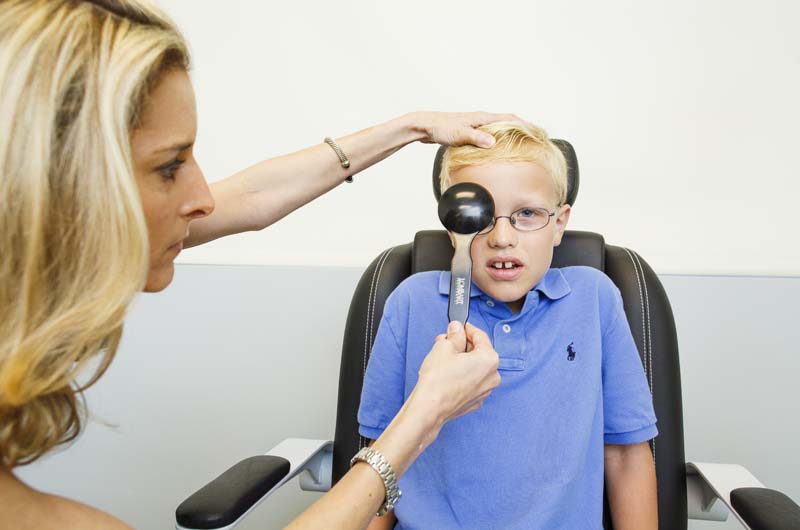Pediatric Strabismus – Jacksonville Ophthalmologist
Strabismus, or ocular misalignment, includes eyes that wander up, out, down or in, and is found in almost 4% of the US population. Strabismus is described in terms of the direction, location and frequency of wandering. Each type is associated with different causes and management protocols.
Most strabismus results from an abnormal signaling mechanism from the brain, which controls eye movements. It is not usually an abnormality of the extraocular muscles themselves. For this reason, the brain plays a large role in developing and maintaining straight eyes. The ability to perceive depth, or to fuse the images from each eye, is the biggest factor in obtaining successful alignment. Complaints of double vision, or signs of intermittent misalignment, should be addressed immediately, before the brain adapts to suppress the wandering eye.
Strabismus may be treated with glasses, patching, or surgery, depending on the etiology. Each child is different. Even if someone else’s child has responded to a particular therapy, this success may not be generalized to all children. Please feel free to ask our staff to explain the differences in therapy options, so that you may have a better understanding of why a certain treatment plan has been recommended. Here at Pediatric Eye Consultants of North Florida, we tailor each individual plan to the unique needs of your child.

Accommodative Esotropia
Non-Accommodative Esotropia
Intermittent Exotropia
© 2025 Pediatric Eye Consultants of North Florida. All rights reserved. | Privacy & Terms of Use
